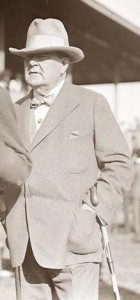 Today is Winter Solstice, and as my late father-in-law used to say, have you noticed the days are getting longer?
Today is Winter Solstice, and as my late father-in-law used to say, have you noticed the days are getting longer?
Well, no, not in the afterdaze of the snowstorm that’s punched the Pacific Northwest and reminded me, if briefly, of my stint living in Upstate New York, a long time ago. In those days I knew how to drive in the snow — even a pathetic yellow Ford Pinto that would start only after I opened the hood and stuck a stick inside the solenoid so the fuel could get going and do its job. This required a procedure involving a return to the driver’s seat to turn the key, then another trip outside to take the stick out of the solenoid and slam the hood down, making sure I’d set the dodgy emergency brake in the meantime. It was a neat trick in winter weather that might be 15 degrees above or 15 below, but when you’re in your 20s you’re capable of miraculous things.
And here we are, 35 years later, in another season of miraculous things — or coincidental occurrences, or events fully within the statistical model of probability, depending on how you view these things. Last night at 11:38 my mother-in-law arrived at Portland’s Union Station on an Amtrak run from Seattle that had been scheduled to arrive at 5:50 but was slowed down by little inconveniences that included a derailed freight train and several frozen couplings that had to be unfrozen so her train could pass. No, I don’t know how they do that. Somewhere along the line, when it became apparent that the train was going to be several hours late, the Amtrak people offered their passenger-hostages a movie to while away the wait — if they paid four bucks. Some people will regard the train’s eventual safe arrival as a miracle. All people will agree that Amtrak’s version of hospitality under duress falls well within the statistical model of probability.
 Today, on the solstice, all is well. We might not make it out of the house (or beyond the lure of snowballs in the yard, although both cats have ventured trepidatiously out of doors, and I’ve just been reminded that the neighbor across the street is throwing an open house later this afternoon, with lots of food and drink). But the larder is full, and a log’s on the fire — it’s made of compressed coffee grounds, which I’ve persuaded myself come from organically grown, fair-trade, visions-of-a-better-life beans. Tuaca and bourbon and cider and eggnog are available, and the resident 11-year-old, master of decorative gift-wrapping, has been busily bundling presents not destined for his own stash and then arranging them beneath the Christmas tree, which seems glowingly unaware of its dual role in Christian and pagan symbolism.
Today, on the solstice, all is well. We might not make it out of the house (or beyond the lure of snowballs in the yard, although both cats have ventured trepidatiously out of doors, and I’ve just been reminded that the neighbor across the street is throwing an open house later this afternoon, with lots of food and drink). But the larder is full, and a log’s on the fire — it’s made of compressed coffee grounds, which I’ve persuaded myself come from organically grown, fair-trade, visions-of-a-better-life beans. Tuaca and bourbon and cider and eggnog are available, and the resident 11-year-old, master of decorative gift-wrapping, has been busily bundling presents not destined for his own stash and then arranging them beneath the Christmas tree, which seems glowingly unaware of its dual role in Christian and pagan symbolism.
One of those presents, which my wife discovered a few days ago, is a Wiccan cookbook filled with delightful old woodcut prints and recipes that may or may not actually be useful: In a case like this, the recipes aren’t really the point. This one will be opened by a devotee of the culturally alternative and pleasingly esoteric. We like thinking about the old ways, even if we also think that electricity and modern medicine are pretty nifty things.
There will be no Wicker Man in our household this season. Our traditions are more Christian and, in my daughter’s case, Jewish. But these things get smudged and crossed and fused. We are all, inside our heads and traditions and belief systems, something like Frankensteinian monsters, stitched together from who knows what? — and that’s really not such a bad or alarming thing.
This morning I cruised through Art Knowledge News, a site I like to check out every couple of days, and discovered a pair of intriguing exhibitions arriving soon in England that illustrate, coincidentally, the hybrid quality of contemporary life. The first, to be shown starting in February at Yale and then moving to the Fitzwilliam Museum in Cambridge, celebrates the bicentenary of Charles Darwin’s birth by showing the effect of his revolutionary recalibration of natural causation on the world of art. The second, opening in April at the Tate Britain, is a restaging of William Blake’s only solo art show, in 1809, with all of its mystic, angelic, otherworldly vision of something vastly beyond the commonplace.
Somehow, historically and culturally, I find myself able to embrace both.
I suppose that’s a miracle.
 Ah, 2008. The year when the fat got lean and the lean got leaner. The year when the big fat lie led to the big fat crash. The year when the faked memoir devolved from the merely mercenary and narcissistic to the unbearably sad and pitiable. The year, more cheerfully, when Obama won and the Yankees lost.
Ah, 2008. The year when the fat got lean and the lean got leaner. The year when the big fat lie led to the big fat crash. The year when the faked memoir devolved from the merely mercenary and narcissistic to the unbearably sad and pitiable. The year, more cheerfully, when Obama won and the Yankees lost.







